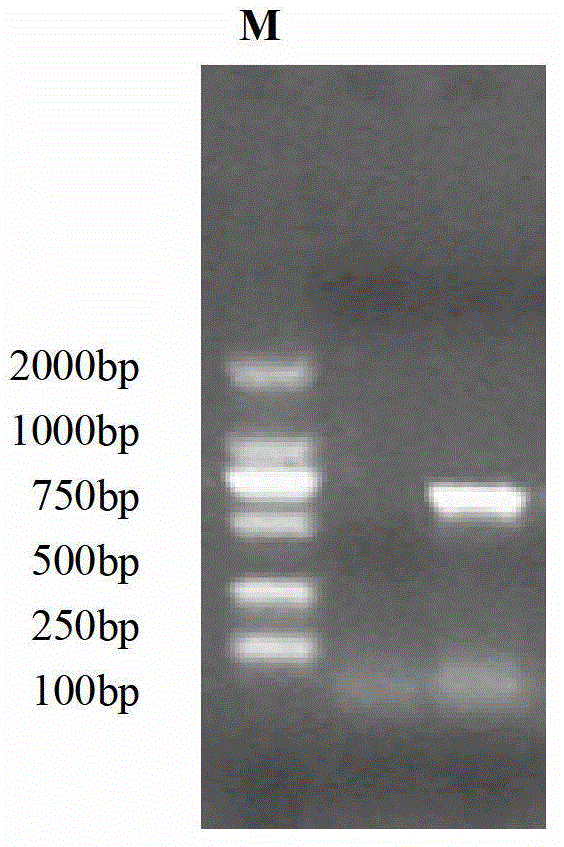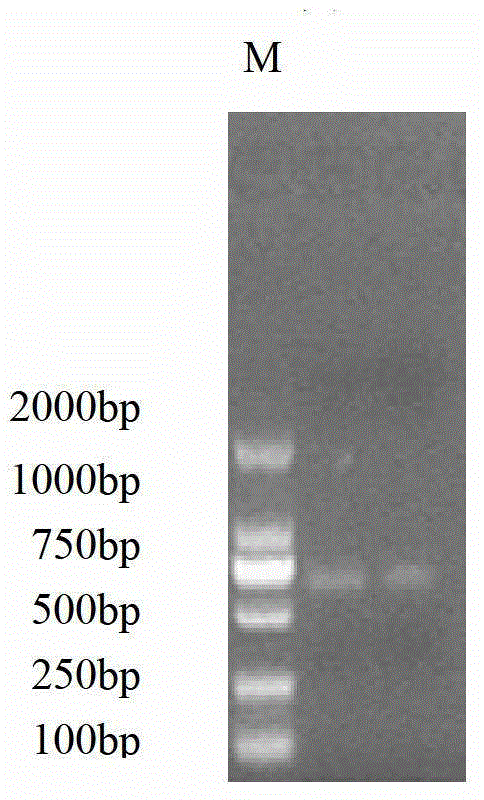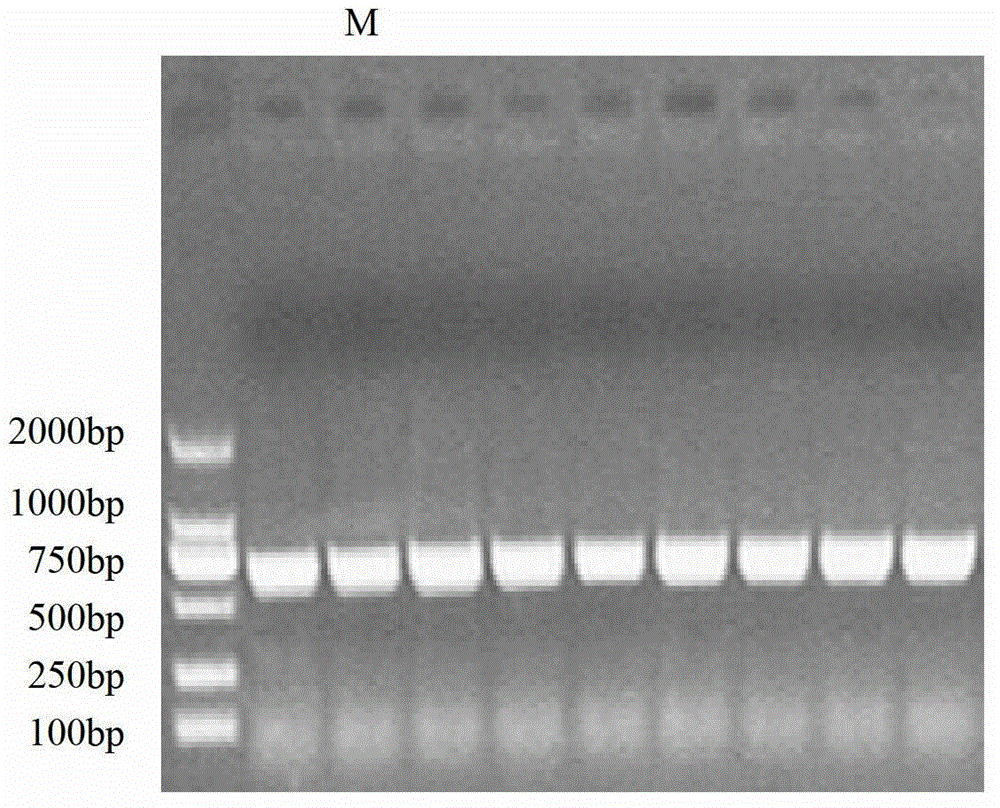Gene fragment for controlling silking of major cotton leafroller as well as cloning method and application thereof
A technology of cotton leaf roller and leaf roller silk fibroin, applied in the fields of application, genetic engineering, plant gene improvement, etc., can solve the aggravation of cotton leaf roller damage and the unsatisfactory control effect of cotton leaf roller, etc. question
- Summary
- Abstract
- Description
- Claims
- Application Information
AI Technical Summary
Problems solved by technology
Method used
Image
Examples
Embodiment 1
[0030] 1. Extraction of Total RNA
[0031] RNA was extracted using the SV Total RNA Isolation System kit from Promega, the specific method is as follows:
[0032] 1) Add 1mL of RNA Lysis Buffer (with BME) in a sterile centrifuge tube.
[0033] 2) Take the overwintering mature cotton leaf roller larvae, put them into a mortar filled with liquid nitrogen, grind them quickly with a pestle, and grind them into white powder. After the liquid nitrogen evaporates, immediately transfer the powder to a 300 μL In the centrifuge tube of RNA Lysis Buffer, invert several times to mix thoroughly.
[0034] 3) Add 350 μL RNA Dilution Buffer (blue) to 300 μL lysate, mix by inverting 3-4 times. 70°C, metal bath for 2.5 minutes.
[0035] 4) Centrifuge at 12000 rpm for 10 minutes.
[0036] 5) Prepare a new RNase-free centrifuge tube, and use a pipette to transfer the centrifuged clarified lysate to the new centrifuge tube to avoid aspiration of the precipitate.
[0037] 6) Add 200 μL of 95% ...
PUM
 Login to View More
Login to View More Abstract
Description
Claims
Application Information
 Login to View More
Login to View More - R&D
- Intellectual Property
- Life Sciences
- Materials
- Tech Scout
- Unparalleled Data Quality
- Higher Quality Content
- 60% Fewer Hallucinations
Browse by: Latest US Patents, China's latest patents, Technical Efficacy Thesaurus, Application Domain, Technology Topic, Popular Technical Reports.
© 2025 PatSnap. All rights reserved.Legal|Privacy policy|Modern Slavery Act Transparency Statement|Sitemap|About US| Contact US: help@patsnap.com



